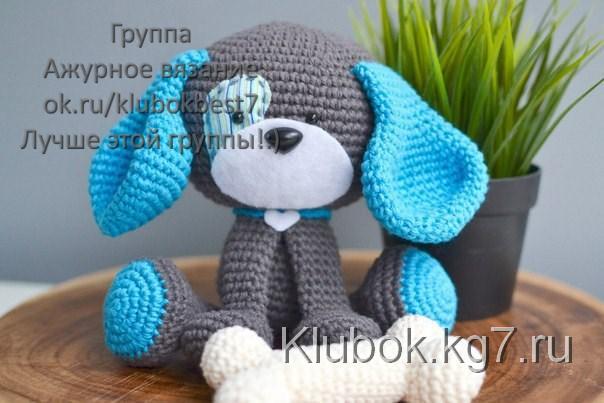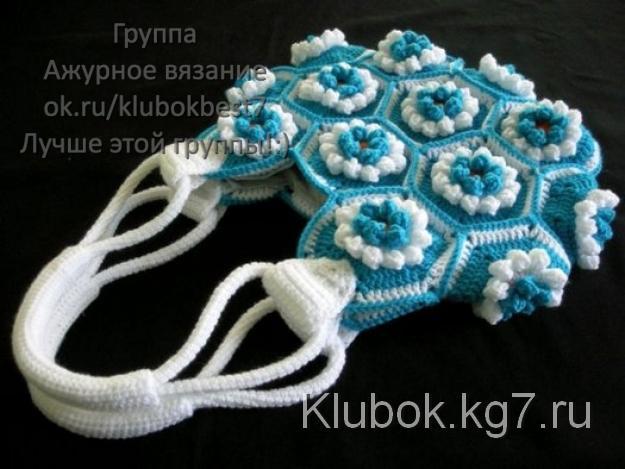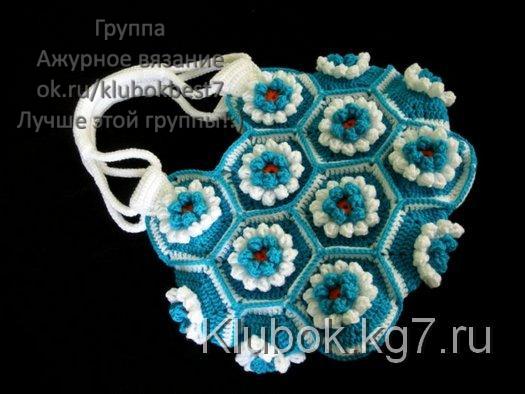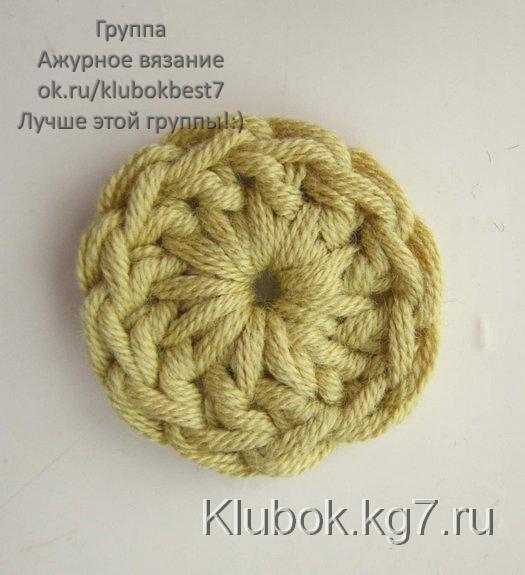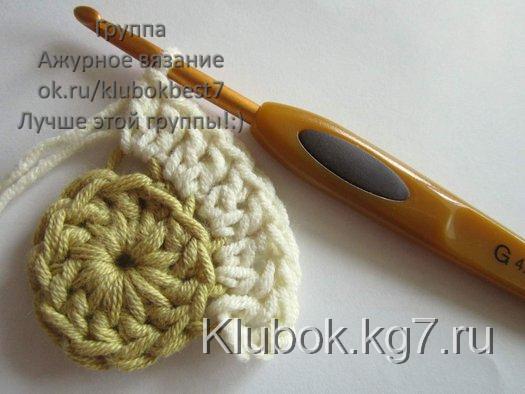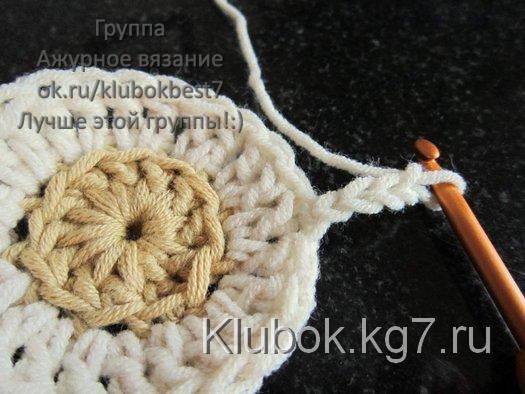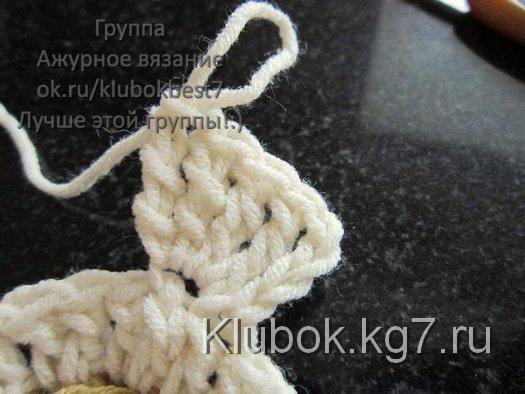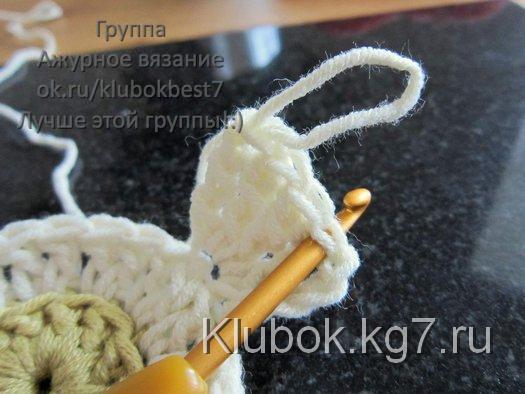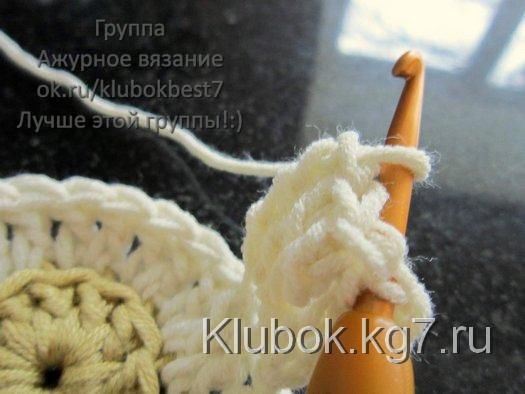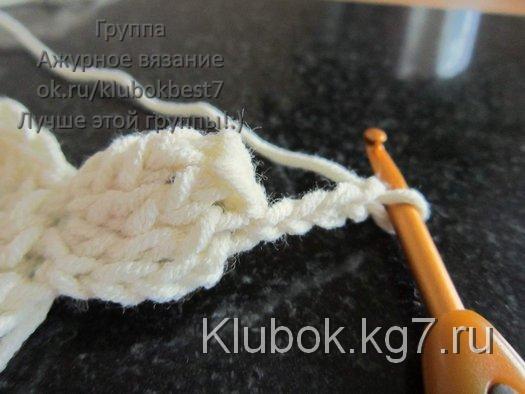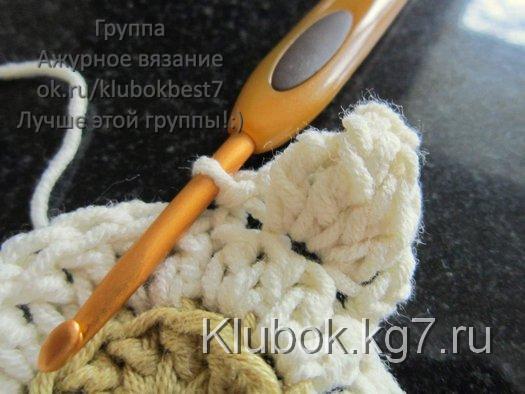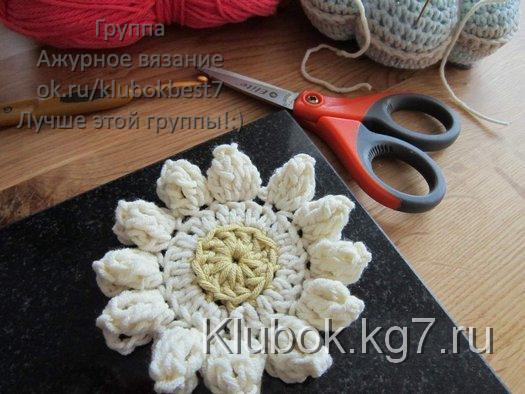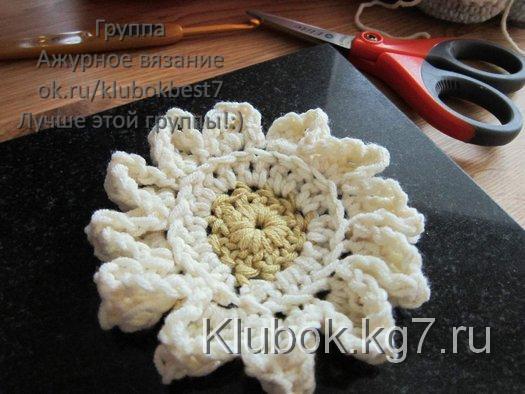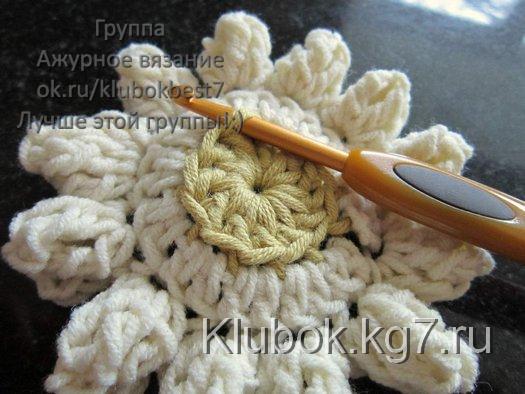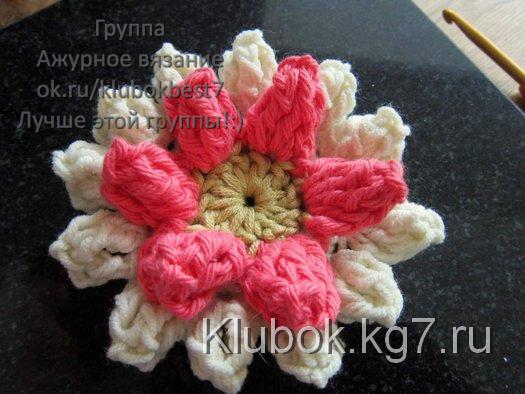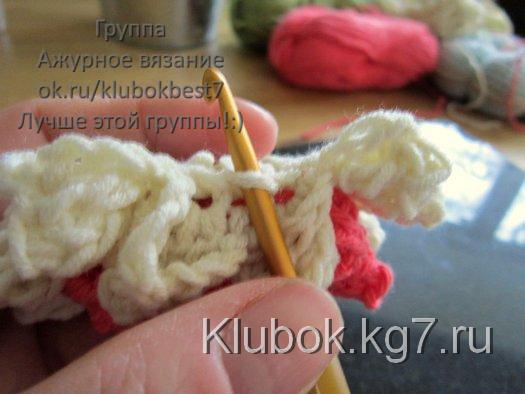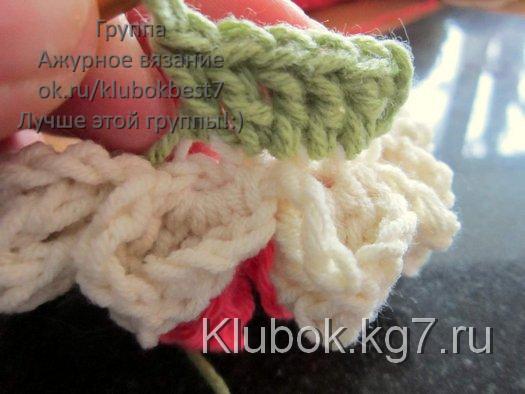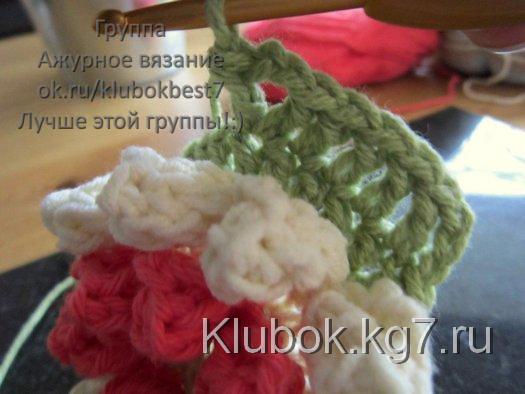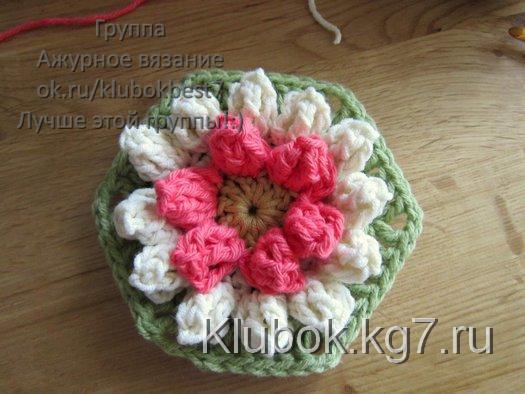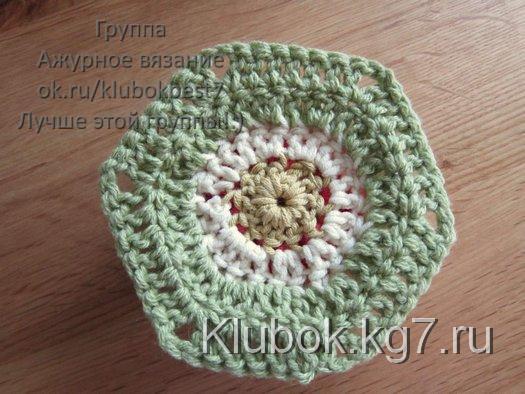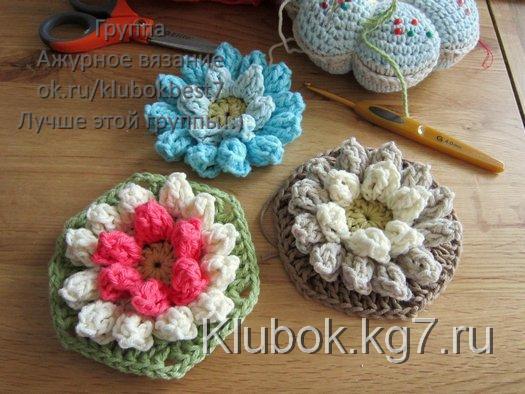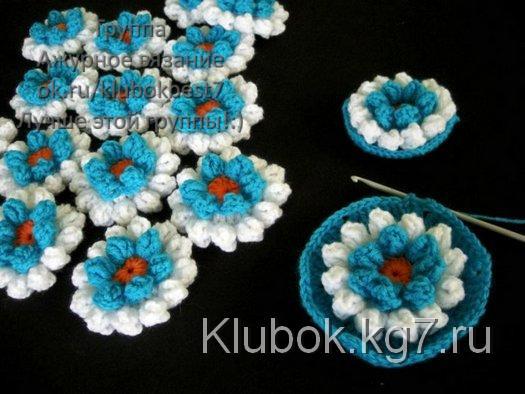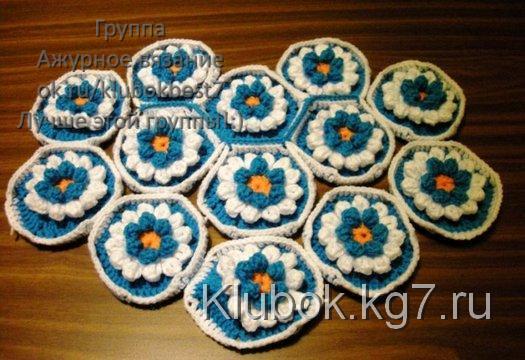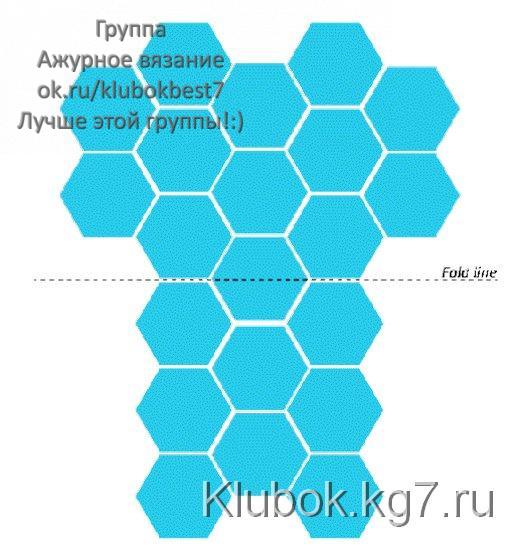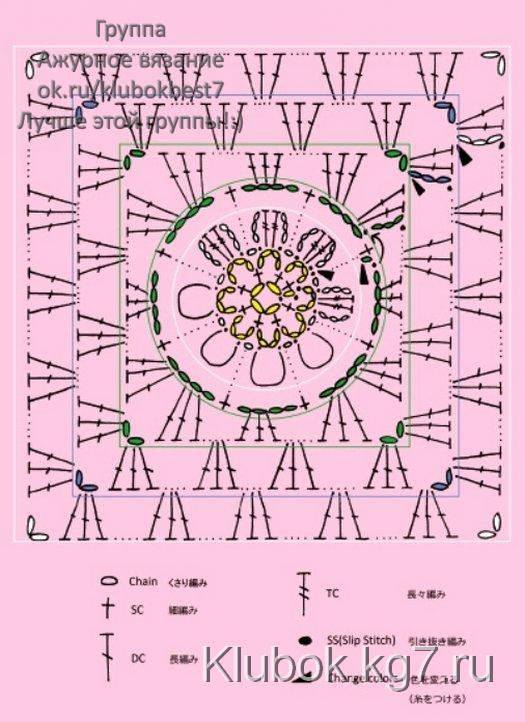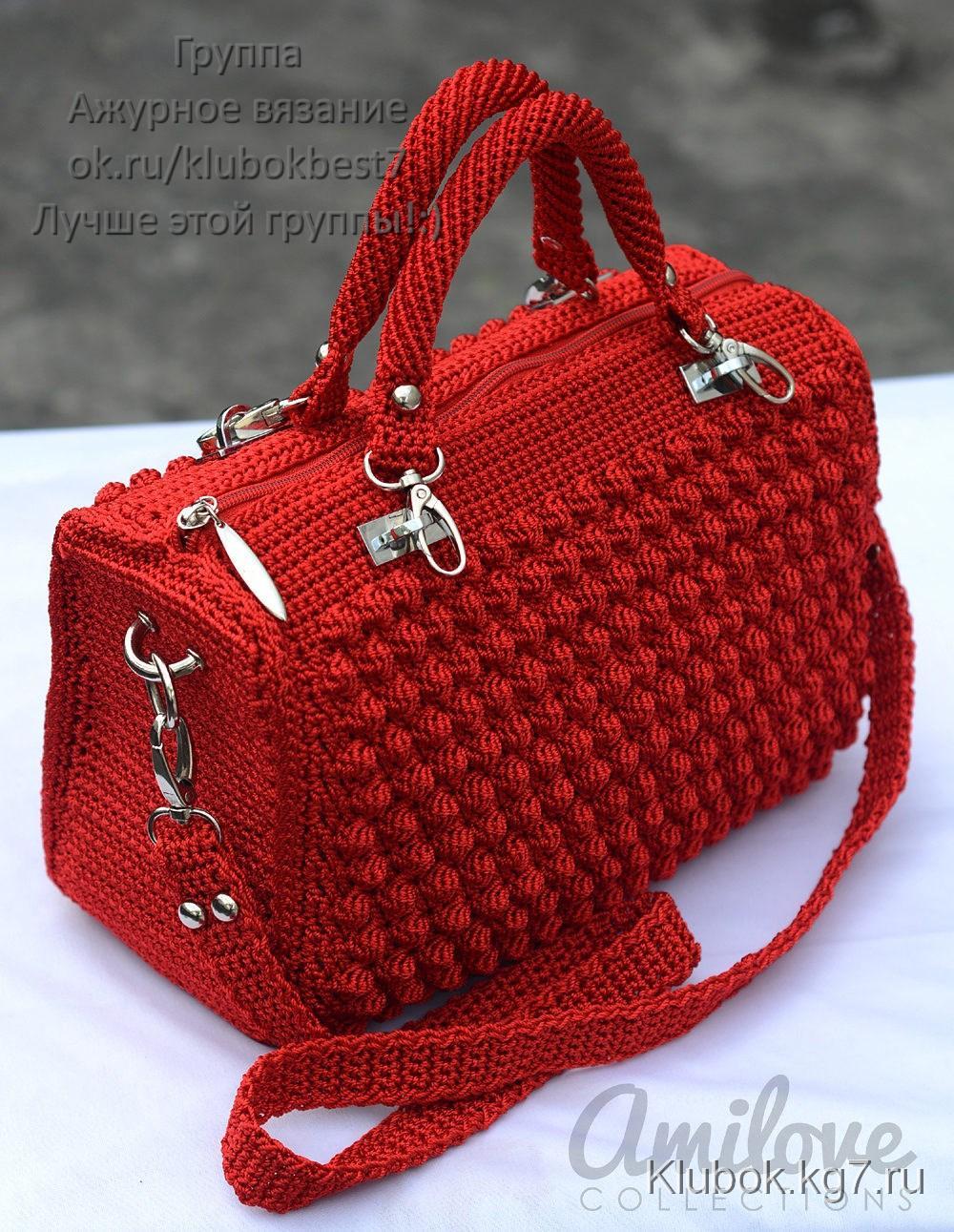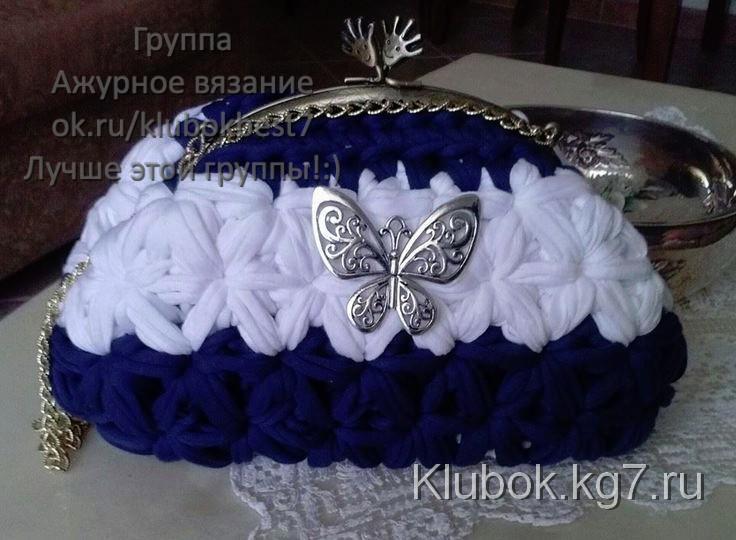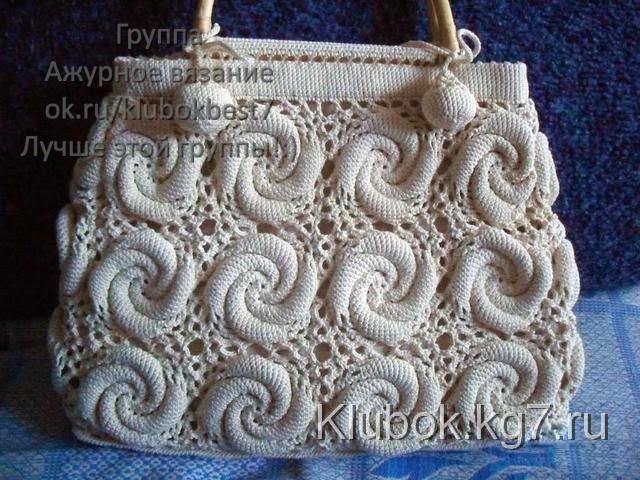Вязанная сумочка крючком из цветочных мотивов
Добавлено: 31.03.2014 в 01:13 Просмотров: 65910
Вязанная сумочка крючком из цветочных мотивовKlubokhttp://klubok.work/2/62/4747/Klubokhttps://klubok.kg7.ru/css/image/top-logo.png
Выбор летней сумки – сложная задача. Сумки из кожи или кожзама довольно практичны, однако смотрятся грубовато, а текстильные сумочки выглядят по-летнему воздушно, но быстро «занашиваются». Предлагаем готовиться к лету заблаговременно – сегодня мы вяжем из цветочных мотивов красивую летнюю сумочку!
Считаете, что заниматься летними аксессуарами преждевременно, ведь впереди столько зимних праздников? Используйте только белые нитки – и дочка, исполняющая на утреннике роль Снежной королевы, с удовольствием возьмет с собой сумочку из объемных снежинок! Для тех, кто не в курсе, снежинки – это тоже цветы, только зимние и белоснежные (это знает каждый ребенок!).
Вяжем сумочку крючком из отдельных мотивов, напоминающих цветки кувшинки. Идея этих цветочных шестигранников принадлежит Карен, которая ведет блог «Color in a simple life», а на просторах рунета эта сумочка «бродит» без схемы вывязывания мотивов. Исправим это упущение, и предоставим не схему, а целый МК по вязанию шестиугольника-лилии! В описании будут использоваться следующие сокращения:
• СС – соединительный столбик;
• ВП. – воздушная петля;
• СН – столбик с накидом;
• С2Н – столбик с двумя накидами.
Начало работы: провяжите 4 ВП нитью желтого цвета, замкните их в кольцо при помощи СС.
Ряд 1: выполните подъем из 3 ВП, провяжите в кольцо 11 СН, затем выполните СС в последнюю из начальных ВП (= 12 петель).
Ряд 2: за заднюю дужку петли присоедините нить белого цвета (и далее все столбики провязывайте только за заднюю дужку), выполните подъем из 3 ВП, в ту же петлю СН, далее *в след. петлю 2 СН, от * повторить еще 10 раз, завершить ряд СС в последнюю из начальных ВП (= 24 петли).
Ряд 3: формируем первый ряд лепестков, провязывая все столбики за передние дужки, *4 ВП,
затем провязываем в след. петлю 4 С2Н, вытягиваем петлю и вынимаем крючок
водим крючок в первый С2Н
подхватываем крючком сброшенную петлю, затягиваем ее до обычного размера и протягиваем через первый С2Н – формируем лепесток-«шишечку».
Выполняем подъем из 4 ВП
далее провязываем СС в след. петлю*
Повторяем еще 12 раз от * до *, завершить ряд провязыванием СС в первую из начальных 4 ВП.
С изнанки мотив выглядит таким образом:
Ряд 4: присоединяем нить другого цвета за переднюю дужку петли ряда 1 и приступаем к вывязыванию внутреннего ряда лепестков.
*Выполняем подъем 4 ВП, провязываем в след. петлю 4 С2Н, сбрасываем петлю, вводим крючок в первый С2Н, подхватываем сброшенную петлю и протягиваем ее для закрепления шишечки, провязываем 4 ВП и выполняем СС в след. петлю; от * повторяем еще 5 раз (должно получиться 6 лепестков).
Для превращения цветка в шестиугольный мотив продолжаем вязание.
Ряд 5: присоединяем пряжу нужного цвета с изнаночной стороны цветка за заднюю дужку петли ряда 3.
Подъем 3 ВП, в ту же петлю СН, затем СН в след. петлю, далее *2 СН в след. петлю, 1 СН; от * повторить еще 10 раз, завершить ряд СС в верхнюю петлю из начальных 3 ВП (= 36 петель).
Ряд 6: столбики провязываются традиционным способом – за обе дужки петли нижнего ряда. Подъем 3 ВП, затем 4 СН, *в след. петлю [1 СН, 2 в.п., 1 СН],
5 СН; от * повторить 4 раза, провязать в след. петлю [1 СН, 2 в.п., 1 СН] и завершить ряд СС в верхнюю из начальных 3 ВП.
Вот так выглядит готовый шестиугольный мотив с лилией.
Вид мотива с изнаночной стороны.
Сумочку вяжем из цветочных мотивов, описанных в МК, однако после завершения 6 ряда вязание не заканчиваем.
Нитью контрастного цвета провязываем ряд 7 аналогично ряду 6, только вместо 4 СП провязываем 6 СН, а вместо 5 СН – 7 СН
Вяжем сумочку крючком в соответствии со схемой сборки – вывязываем 21 мотив и сшиваем и в порядке, представленном на схеме.
Соединяйте мотивы нитью контрастного цвета с лицевой стороны – строгие геометрические линии отдельных элементов будут видны отчетливо, что придаст сумке своеобразную «изюминку».






